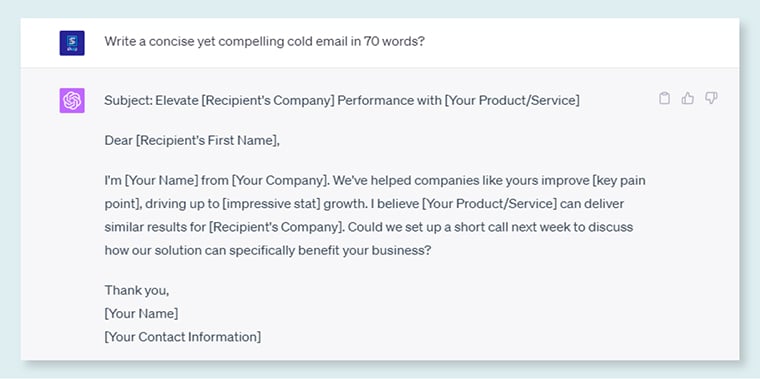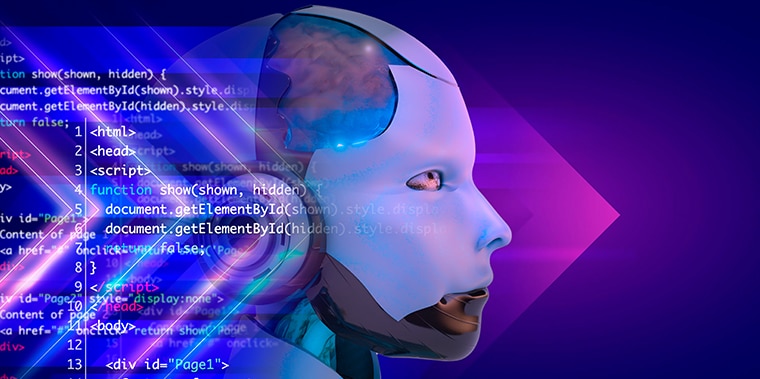Productivity, efficiency, creativity.
These are three very important words in every industry and organization. Generative AI has the potential to help every individual improve these parameters. But what makes it so great that all technical and non-technical organizations want to create amazing capabilities?
Generative AI has been around for quite some time, but has gained immense popularity through applications such as ChatGPT, MidJourney, DeepFake, and more. As AI infiltrates more and more of our lives, the question arises: how can we cope with this AI boom? We are today trying to answer this question with the help of extensive research, cases and studies.
Basics first | Understanding Generative AI
Generative AI refers to a set of algorithms based on machine learning and artificial intelligence that can be used to generate content. Just as humans can create any type of content such as audio, video, images, text, etc., Generative AI can also do the same through dedicated tools.
Impressive capabilities allow generative AI to understand the requirements entered into the system and produce suitable results in the desired format. You can use tools like ChatGPT to create text content, including taglines, blogs, newsletters, and more.
Why you should pay attention to AI trends
According to a McKinsey report, generative AI could add trillions of dollars in value to the economy. The limited use cases for generative AI discovered so far could result in an additional impact of between $2.6 trillion and $4.4 trillion.
Most of this value contributes to four areas:
- customer operations
- Marketing and Sales
- software engineering
- research and development
In each of these areas, generative AI, when used in the right way, can improve the way individuals work. It has the potential to improve worker productivity by automating repetitive tasks.
Applications of Generative AI
Generative AI has many applications that can benefit all types of organizations.
Create image


Enter a text prompt and an AI tool like MidJourney or Dall-E will generate the image. Likewise, you can use these tools to enhance your images, improve their aesthetics, and add details.
Use generative AI to complete your image by adding more parts or changing image style, lighting, shape, and more. You can change the image orientation in:
- Change the light texture of the image from dark to light or from day to night.
- Change the image color from black and white to color.
- Change image style from Original to Painting, Monet, Van Gogh, Cinquecento, 3D, Art and more.
- Convert sketch-based and semantic images into photorealistic images.
- Turn close-up portraits into emojis and animated characters.
create video




Now you can create videos from scratch using the power of generative AI. AI can help automate repetitive and tedious tasks in video production, including composing, adding effects, animation, narration, and adding characters.
AI can also be used to predict future frames of a video. By understanding temporal and spatial elements, AI can generate the next sequence of a video almost accurately.
Some of the specific use cases for video creation include:
- Restore old videos to improve quality with AI-based upscaling.
- Face synthesis and voice cloning using Deep Fake technology.
making music




The next amazing task that AI can complete is creating music by learning existing patterns and musical input. AI allows you to create original music for almost any purpose.
AI uses text-to-speech (TTS) generators that can generate realistic audio from text. It can also evaluate existing audio files and their corresponding voices to generate similar audio content.
Create and create text




One of the most popular applications of generative AI is creating text. Tools like ChatGPT are taking the industry by storm, making it possible for everyone to create content with prompts.
The advantage of text generation is that AI models can learn your writing style and tone to create content in the format and standard you need.
In text generation, AI can do some amazing things:
- Manipulate text with a prior understanding of tone and format.
- It is a text summary of a long excerpt of something written.
- Simplifying complex content.
- Classifies text based on pre-selected parameters such as emotion, topic, tone, etc.
Code generation and completion




Another surprising application of generative AI is that it can help with code completion and generation. You can submit a piece of programming code and ask it to complete the same task, or you can ask the AI tool to generate code from scratch.
In code generation, generative AI can help:
- Generating test cases for code analysis and evaluating software functionality.
- Automatic bug fixing in written code.
- Implement machine learning models into existing software.
Use AI to understand and solve customer problems. AI has the potential to help you clearly define the steps on how to solve a problem or take advantage of a gap your competitors are missing.
Adapting to and following the AI boom
Even self-sustaining smart AI models like ChatGPT require training and support. ChatGPT has been supplied with 45 terabytes of data, with 1 terabyte of storage capable of storing up to 250 Full HD movies or 500 hours of HD video.
After training, ChatGPT and other AI models can generate desired responses. So, if companies want to stay up to date on current dynamics, they need to get up to speed on their AI game.
Before taking any action, we must understand that AI is here and is no longer a concept. AI is already thriving and businesses are reaping the benefits by leveraging AI capabilities.




-
Identify and test generative AI use cases
The first step toward maturity in generative AI is identifying use cases where relevant solutions can be implemented. Most of the tasks associated with Generative AI involve generating text, images, and video. See if there are other use cases relevant to your business and work.
After identifying your use case, test run the following based on your business requirements: Measure each tool and use case to achieve the desired results.
-
Fine-tuning and strategic changes to existing models
Whether updating an existing AI model or building a new one, the right strategy is essential for a smooth implementation. Improve your internal capabilities to fine-tune and leverage existing talent, resources, and investments to revitalize your AI implementation.
However, the important part here is to fully understand the functionality and have extensive domain knowledge. Responding to the AI boom is impossible without the necessary knowledge. So take the time to train and find the right people for every part of the job.
-
See all use cases
Once you identify the AI model you want to implement, use the model to measure all use cases. Measure your progress and take a closer look at all your strengths and weaknesses. Identify the capabilities of AI that support business flows, help solve existing problems, and bring new capabilities.
This framework helps you identify high-priority projects and use cases that can be completed with better execution powered by AI. One use case is using AI to understand your customers.
-
Design every process carefully
Boasting a human-AI connection, you can quickly build action plans based on AI. There are many possibilities, from creating simple workflows with minimal human intervention to creating complex workflows where AI and humans collaborate shoulder to shoulder.
-
Choose the right tools for AI implementation
ChatGPT is the unspoken king of content creation, but it also has dedicated tools for other purposes, such as marketing, sales, customer service, and more.
Most AI tools are classifiers. Classifiers can be trained and modeled to distinguish between images of different subjects. In addition to classifiers, there are Foundation models and Transformers Architecture. The former are trained on vast amounts of data sources and can apply the same data sources to solve existing and future problems.
-
Run a pilot test
Run pilot tests and easily measure results. For example, use AI tools to create a blog and publish it on your website. Measure the performance of human-authored blog posts. What differences do you see? Is AI better or worse than human-written content?
-
Measure, verify and identify improvements
Improve your AI action plan based on pilot test results. Making these improvements will help you achieve better results. But these improvements won’t stop. As the performance of AI improves, the implementation process may change and improve further.
conclusion
AI is part of the global development system and has the potential to change business for the better. AI also has the potential to improve existing systems and processes if it creates new possibilities.
Focus on your organizational structure, requirements, and use cases while implementing your AI system. The key to success with generative AI is identifying its uniqueness and customizing its implementation to fit your organization.
Understand your needs, create a customized plan, and implement it strategically.


